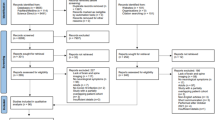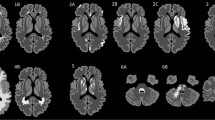Abstract
As part of an NIH-funded study of malaria pathogenesis, a magnetic resonance (MR) imaging research facility was established in Blantyre, Malaŵi to enhance the clinical characterization of pediatric patients with cerebral malaria through application of neurological MR methods. The research program requires daily transmission of MR studies to Michigan State University (MSU) for clinical research interpretation and quantitative post-processing. An intercontinental satellite-based network was implemented for transmission of MR image data in Digital Imaging and Communications in Medicine (DICOM) format, research data collection, project communications, and remote systems administration. Satellite Internet service costs limited the bandwidth to symmetrical 384 kbit/s. DICOM routers deployed at both the Malaŵi MRI facility and MSU manage the end-to-end encrypted compressed data transmission. Network performance between DICOM routers was measured while transmitting both mixed clinical MR studies and synthetic studies. Effective network latency averaged 715 ms. Within a mix of clinical MR studies, the average transmission time for a 256 × 256 image was ~2.25 and ~6.25 s for a 512 × 512 image. Using synthetic studies of 1,000 duplicate images, the interquartile range for 256 × 256 images was [2.30, 2.36] s and [5.94, 6.05] s for 512 × 512 images. Transmission of clinical MRI studies between the DICOM routers averaged 9.35 images per minute, representing an effective channel utilization of ~137% of the 384-kbit/s satellite service as computed using uncompressed image file sizes (including the effects of image compression, protocol overhead, channel latency, etc.). Power unreliability was the primary cause of interrupted operations in the first year, including an outage exceeding 10 days.




Similar content being viewed by others
References
World Health Organization, World Malaria Report 2008. http://apps.who.int/malaria/wmr2008
NIH/NIAID Grant 2 R01 AI034969-10A1, Clinicopathological Correlates of Cerebral Malaria, 2007
Gamanagatti S, Kandpal H: MR imaging of cerebral malaria in a child. Eur J Radiol 60:46–47, 2006
Looareesuwan S, Laothamatas J, Brown TR, Brittenham GM: Cerebral malaria: a new way forward with magnetic resonance imaging (MRI). Am J Trop Med Hyg 81:545–547, 2009
Pandian PS, Safeer KP, Shakunthala DTI, Gopal P, Padaki VC: Store and forward applications in telemedicine for wireless IP based networks. J Netw 2:58–65, 2007
Amble R, Comparini A, Kumar KR, Dahlgren R, Lurie YM: Delivering low-bandwidth telemedicine services over hybrid networks in developing countries (abstract). Conf Proc IEEE Eng Med Biol Soc 7:5375, 2004
Ernst RD, Kawashima A, Shepherd W, Tamm EP, Sandler CM: Distributing digital imaging and communications in medicine data and optimizing access over satellite networks. J Digit Imaging 12:195–196, 1999
Stewart BK, Carter SJ, Cook JN, Abbe BS, Pinck D, Rowberg AH: Application of the advanced communications technology satellite to teleradiology and real-time compressed ultrasound video telemedicine. J Digit Imaging 12:68–76, 1999
Kuduvalli GR, Rangayyan RM, Desautels JEL: High-resolution digital teleradiology: a perspective. J Digit Imaging 4:251–261, 1991
Anogianakis G, Maglavera S, Pomportsis A: Relief for maritime medical emergencies through telematics. IEEE Trans Inf Technol Biomed 2:254–260, 1998
Mair F, Fraser S, Ferguson J, Webster K: Telemedicine via satellite to support offshore oil platforms. J Telemed Telecare 14:129–131, 2008
Acknowledgments
The leadership of Dr. E. James Potchen, Chair of MSU Radiology, was instrumental in establishing the added support of GE Healthcare in the NIH proposal toward establishing the MRI facility in Malaŵi. NIH/NIAID Grant 2 R01 AI034969-10A1 provides significant funding for this project. GE Healthcare and MSU Radiology generously supported the procurement of the Ovation 0.35-T MR Scanner. MSU College of Osteopathic Medicine supported the construction of the MRI facility building. Queen Elizabeth Central Hospital donated the land upon which the MRI facility is built. Herbert Sivitz and staff at Alaska Native Tribal Health Consortium shared useful insights regarding their experiences with transmitting DICOM data over satellite links.
Author information
Authors and Affiliations
Corresponding author
Rights and permissions
About this article
Cite this article
Latourette, M.T., Siebert, J.E., Barto, R.J. et al. Magnetic Resonance Imaging Research in Sub-Saharan Africa: Challenges and Satellite-Based Networking Implementation. J Digit Imaging 24, 729–738 (2011). https://doi.org/10.1007/s10278-010-9323-4
Published:
Issue Date:
DOI: https://doi.org/10.1007/s10278-010-9323-4




